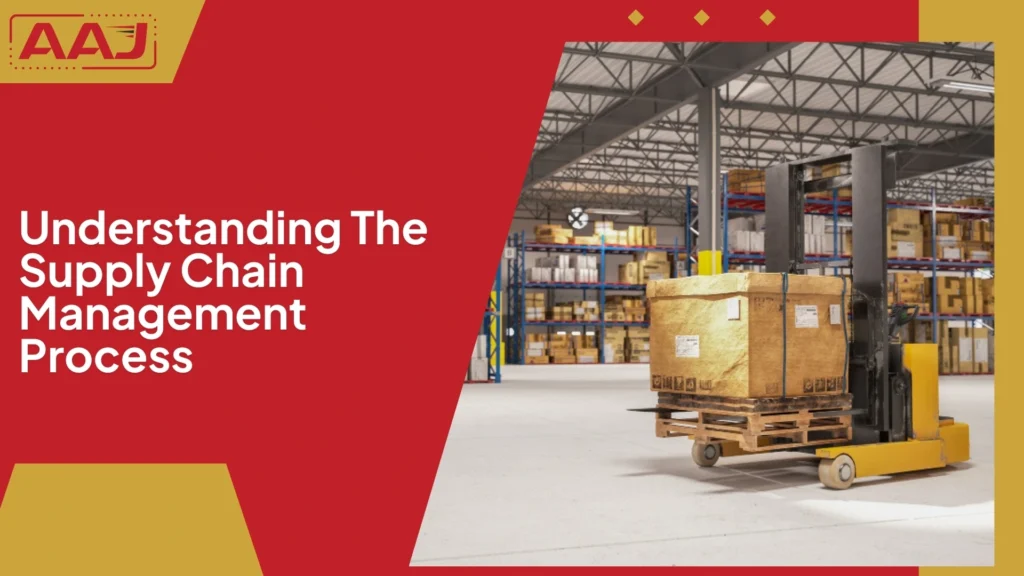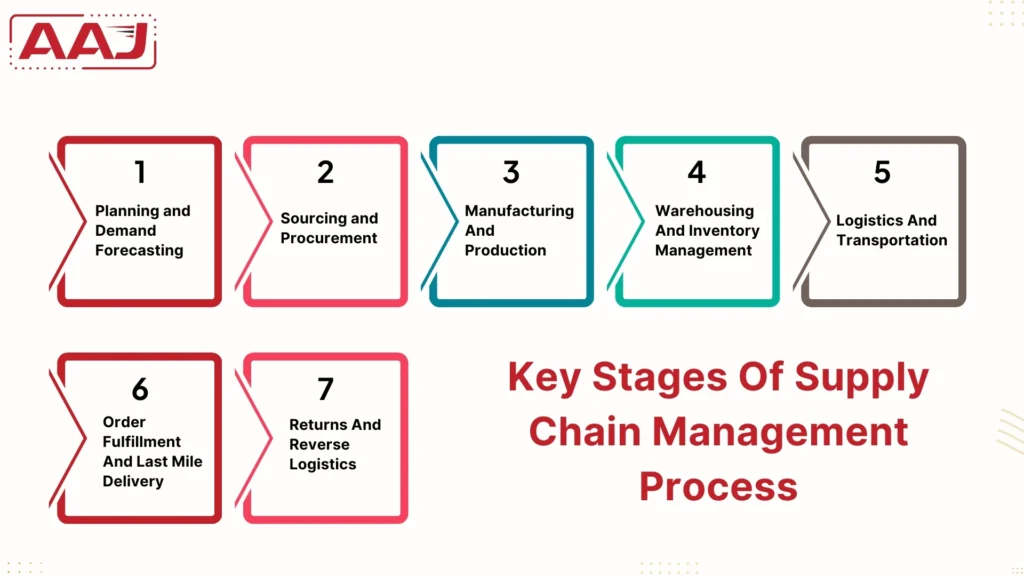The rise of online shopping has pushed companies to invest in hyperlocal warehouses, AI-based demand forecasting, and same-day delivery networks. Businesses with efficient supply chain process can achieve up to 95% customer satisfaction due to faster deliveries and better product availability.
Maintaining the supply chain management process is the key to the success of any business. Its main goal is to seamlessly move the products to the customer cost-effectively, within time and in proper condition. Maintaining all the supply chain processes effectively can reduce operational costs, enhance customer satisfaction and improve the decision-making process of the businesses.
Understanding The Supply Chain Management Process

The supply chain management process involves coordination and management of various activities like procurement, manufacturing, distribution, logistics and returns management. It involves all the activities that are required to transform the raw materials into efficient goods and then finally deliver them to the customer.
Suppliers provide all the necessary materials, such as plastic or metal components, to the business. They are transported to the manufacturing facilities and converted into finished goods. The goods are then transported to the warehouses and are stored in the proper location.
Whenever a customer orders any product, it is picked, packaged properly, and shipped either to the retailer (B2B business) or directly to the customer (B2C ).
The stakeholders play an important role in the supply chain processes. For example, if we talk about suppliers, then their reliability will directly impact the production timelines. Manufacturers convert the raw materials into finished goods and ensure that the final product adheres to the quality standards. Retailers are intermediaries in the supply chain processes and deliver the product to the end customer.
Customers are the final recipients of the entire supply chain process, and their feedback helps to improve the entire process.
So, each step in the supply chain management process is crucial for the growth of the business. A well-coordinated supply chain ensures timely delivery of ordered products to the customer and enhances customer satisfaction.
Importance Of Effective Supply Chain Management Process
- An efficient supply chain management process identifies the cost-saving opportunities in a business.
- It improves proper communication and collaboration with suppliers and distributors.
- Supply chains are susceptible to various risks. For example, pandemics or roadblocks can cause delays in delivering products to customers. A well-managed supply chain process can identify the risks and reduce them.
- Optimizing supply chain processes can fulfill customer demand promptly.
Key Stages Of Supply Chain Management Process

1. Planning and Demand Forecasting
Planning is the foundation of the entire supply chain process. It utilizes historical data and market trends and predicts product demand in the market in the near future. Planning involves strategies to meet customer demand effectively.
2. Sourcing and Procurement
Sourcing involves the selection of reliable suppliers to provide good raw materials at the proper time.
3. Manufacturing And Production
The manufacturing and production processes involve the conversion of raw materials into finished goods. An efficient production process will not only meet customer demand but also will maintain quality standards.
4 . Warehousing And Inventory Management
The warehousing operations include receiving, picking, packaging or moving products inside the warehouse and product handling. Usage of the latest technology in warehouses, like warehouse management systems or automated warehouses, can increase the efficiency of the entire 3PL operations.
Again, inventory management is crucial for a business. Overstocking can lead to the deterioration of time-sensitive or perishable products.
Simultaneously out of stock issues can disappoint customers. So, the usage of technology like warehouse and inventory management systems and data analytics can track inventories in real-time and avoid issues like overstocking and out-of-stock issues.
5. Logistics And Transportation
Logistics involves the movement of products from one place to another. Businesses choose multimodal transport modes like air, ocean, road and rail for goods transport.
Choosing an efficient transportation method can reduce the fuel costs of the business. Now, most transport companies are utilizing route optimization software to select the best route for cargo transport. The efficient route is chosen based on traffic, distance, and many more factors.
6. Order Fulfillment And Last Mile Delivery
Order fulfillment involves the selection of ordered products, packaging them and shipping them to the customer. Last-mile delivery is the most complex step in the supply chain process. It involves the transportation of the product to the final customer.
7. Returns And Reverse Logistics
Customers may not like the ordered product and may raise a return request. Reverse logistics manages the backflow of the goods from the customers to the warehouse.
Best Practices For Optimizing The Supply Chain Processes
- Leveraging new technologies like the Usage of AI and machine learning can improve the supply chain management process. For example, the usage of AI and machine learning can accurately demand forecasting. They can even help quickly adapt to changing market conditions and optimize inventory levels inside the warehouse.
- Making warehouse automation can even reduce human errors and increase the efficiency of supply chain management. Usage of robots can handle heavy product loads and move products efficiently from one place to another inside the warehouse. Creating warehouse automation can reduce the business’ labor costs.
- Cloud-based supply chain management software provides real-time access to supply chain data and its operations and improves collaboration with stakeholders.
- The adoption of blockchain technology can increase transparency in the entire supply chain. It tracks everything related to the project, right from sourcing material to the final delivery to the customers. Immutable records can prevent theft and data manipulation.
- A robust risk management strategy can mitigate risks in a Business.

Challenges in Supply Chain Management
1. Supply Chain Disruptions
Unpredictable events like labor strikes or natural disasters can disrupt the entire supply chain management process. It can lead to delays in the delivery of ordered products and decrease customer satisfaction.
2. Rising Fuel And Transportation Costs
Logistics costs are one of the major expenses in the supply chain management process. A rise in fuel costs can increase the operational expenditure of the businesses.
3. Supplier Relationships
Any miscommunication with the suppliers can delay the delivery of the raw materials and badly affect the entire supply chain process.
4. Lack Of Supply Chain Visibility
Limited visibility in the entire supply chain can hinder a business’s decision-making.
Conclusion
The supply chain management processes involve sourcing, procurement, reverse logistics, warehousing and transportation. All the processes are interconnected, and mismanagement in any process can badly affect the entire supply chain and decrease customer satisfaction.
So, businesses should adopt modern technology like warehouse automation and advanced software to increase the efficiency of each supply chain process. Simultaneously, it should collaborate with reliable suppliers so that there will not be a delay in delivering good quality materials for manufacturing the product.




